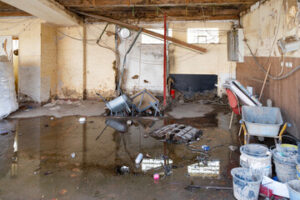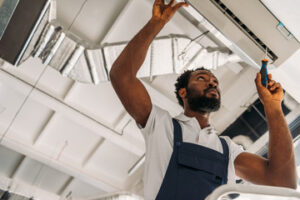Water damage to important documents, sentimental items, and valuable possessions can ruin their integrity and impose irreparable harm. Similarly, structural building materials can be damaged if left unaddressed.

Mold grows in damp environments, depreciating a home or building’s value. The resulting health risks can also be serious. Proper drying and moisture control will minimize the risk of these issues. Contact All Pro Services for professional help.
In the aftermath of flooding or a burst pipe, one of the most devastating things to discover is that important documents and cherished photographs have been irreparably damaged. In addition to being emotionally distressing, loss of these items can also have costly and legal implications for business owners and homeowners. Thankfully, there are steps that can be taken to mitigate damage and save valuable papers and photos from total loss.
Before attempting to restore water-damaged items, it’s crucial to put on protective gloves and carefully triage the damage. Once priority items have been removed, the next step is to dry the remaining materials as quickly as possible. This can be done with a few simple strategies. Absorbent Material: Placing sheets of blotting paper or unprinted newsprint under or between wet documents helps to absorb extra moisture, prevent further damage, and promote faster drying. Air Dry: Simply laying out wet documents on a flat surface and using fans to promote air circulation can be highly effective for paper items that are not too water-damaged.
These techniques can be used individually or in combination with each other, depending on the condition of the documents and individual storage preferences. In addition to utilizing these techniques, businesses and homeowners can help minimize the risk of irreparable damage by keeping physical documents in waterproof or fireproof containers or safes. They can also digitize and back up digital versions of documents to ensure they have a reliable, secure, and accessible copy in the event of an emergency or disaster.
While it’s impossible to eliminate the risk of damage to cherished items from natural disasters and other unforeseen circumstances, taking proactive measures and enlisting professional assistance when needed can help reduce the risks of lost or permanently damaged items. By following these tips, Plant City, Lakeland, Winter Haven and surrounding area residents can better prepare for a flood, leak, or other disaster that could impact their most valued possessions. They can also help ensure the safety and preservation of their belongings by taking a few additional precautions, such as regularly backing up digital copies of their documents and creating a safe, secure storage location for these items.
Sentimental Items
One of the most heartbreaking effects of water damage is the loss of sentimental items. Whether they are photographs, handwritten letters, childhood memorabilia, or family heirlooms, these objects hold great personal significance and are irreplaceable. When left unchecked, water can cause irreparable harm to these valuable possessions by fading, warping, or even destroying them completely. In addition, water damage can impact other important personal belongings such as clothing, furniture, electronics, and other household appliances. These can also become damaged beyond repair and contribute to poor indoor air quality.
One of the first signs of water damage is staining and discoloration of walls and floors. This is because materials like wood and drywall absorb water, swelling and expanding. This distortion leads to paint peeling and stains and in severe cases, can lead to structural issues such as warped or buckled walls. If not addressed promptly, this can wreak havoc on the integrity of a building’s structure and create serious health risks for occupants.
Additionally, water damage can also saturate carpets and other flooring materials, leading to permanent damage. When moisture seeps into these materials, it can cause them to become brittle, spongy, and moldy, making them ineligible for restoration or replacement. In addition, if these materials are not thoroughly dried and ventilated, they can produce unpleasant odors that may be difficult to remove.
Water damage can also wreak havoc on the electrical systems and appliances in a home or commercial property. If not addressed immediately, it can lead to short circuits, corrosion, and inoperable appliances. If you suspect your appliances are affected by water damage, it is best to unplug them and seek professional assistance.
Water damage can also wreak havoc to a home’s foundation, causing settling and cracks. The presence of excessive moisture can also lead to rotting of wooden beams, metals, and concrete. This can cause serious and costly structural problems that compromise the safety of occupants. By understanding the long-term repercussions of water damage, you can take proactive measures to mitigate these negative impacts. This includes regular inspections, prompt intervention, and preventive maintenance.
Valuable Possessions
When water damage happens, valuable possessions like electronic devices and furniture can be irreparably ruined. The extensive damage caused by a burst pipe, severe storm, or leaking roof can lead to significant financial loss. However, the emotional impact of losing important documents, cherished photographs, or sentimental items can be even more devastating.
Cherished Photographs and Sentimental Items
The sensitive materials and sentimental significance of heirlooms and memorabilia make them particularly vulnerable to irreparable damage from water-related incidents. Whether the source of the water is a flood, a burst pipe, or simply consistent exposure to moisture, photos and paper items can discolor, warp, or even degrade and disintegrate. The ink may also bleed, rendering the contents of the document unreadable.
Likewise, valuable jewelry, family heirlooms, and fine art can be tarnished, swollen, or otherwise damaged by the presence of water. In addition, mold growth may occur on these delicate items. Mold is known to cause health issues, particularly for individuals with allergies or respiratory conditions.
While it is impossible to replace cherished photos, heirlooms, or fine art, it is possible to take steps to preserve these treasured items from long-term damage by taking preventive measures and addressing potential problems promptly. For example, by keeping a digital copy of important documents and using waterproof safes to store paper items, it is possible to minimize the risk of permanent damage. It is also helpful to regularly inspect areas where water damage can occur, such as the roof or plumbing, and to ensure these areas are properly sealed and protected. Similarly, by making sure to disclose any history of water damage to prospective buyers, it is possible to protect against future financial losses due to ongoing repair costs. This can help to maintain a property’s value and reduce the likelihood of costly negotiations during the sale process.
Pest Infestations
When water damage hits your building or home, the immediate repairs are likely top of mind. However, there are many other consequences that are less obvious, including pest infestations. In fact, untreated water damage can open the door to numerous unwanted guests. If the conditions remain unchecked, the problem could escalate, leading to severe structural and cosmetic harm.
The condition of water-damaged buildings attracts bugs that feed on rotted and moldy materials. For example, wood boring insects such as silverfish and earwigs are often found in bathrooms or kitchens. They thrive in damp areas, where they can lay their eggs and develop into adults. In addition, wood-destroying termites are drawn to homes with extensive water damage because the excess moisture softens their hard exterior. If not dealt with immediately, the pests can invade and destroy a structure’s foundation and walls.
Water damage also promotes the spread of fungi such as mildew and mold, which can cause health problems for occupants. The fungi can lead to allergies, respiratory issues, and skin irritation. In addition, the growth of these fungi can create unpleasant odors in the building’s interior.
Another serious consequence of untreated water damage is that it can attract a variety of pests, such as rodents, cockroaches, and termites. Rodents and roaches love to inhabit areas that are moist, dark, and cool. These conditions are often created by water damage to basements, crawl spaces, and walls. Water damaged areas are also a good hiding place for these pests, as they can hide in rotting or collapsed material.








